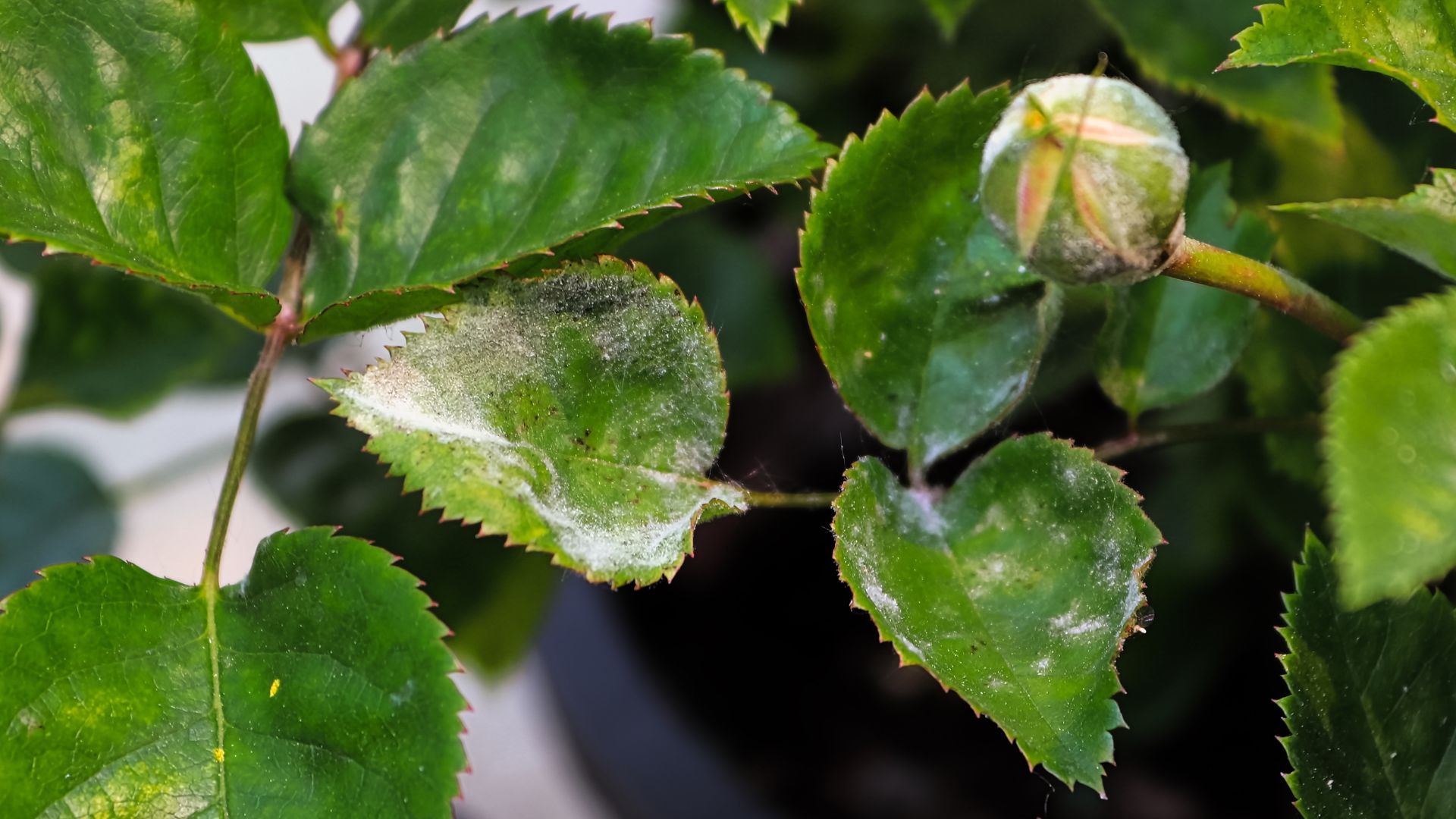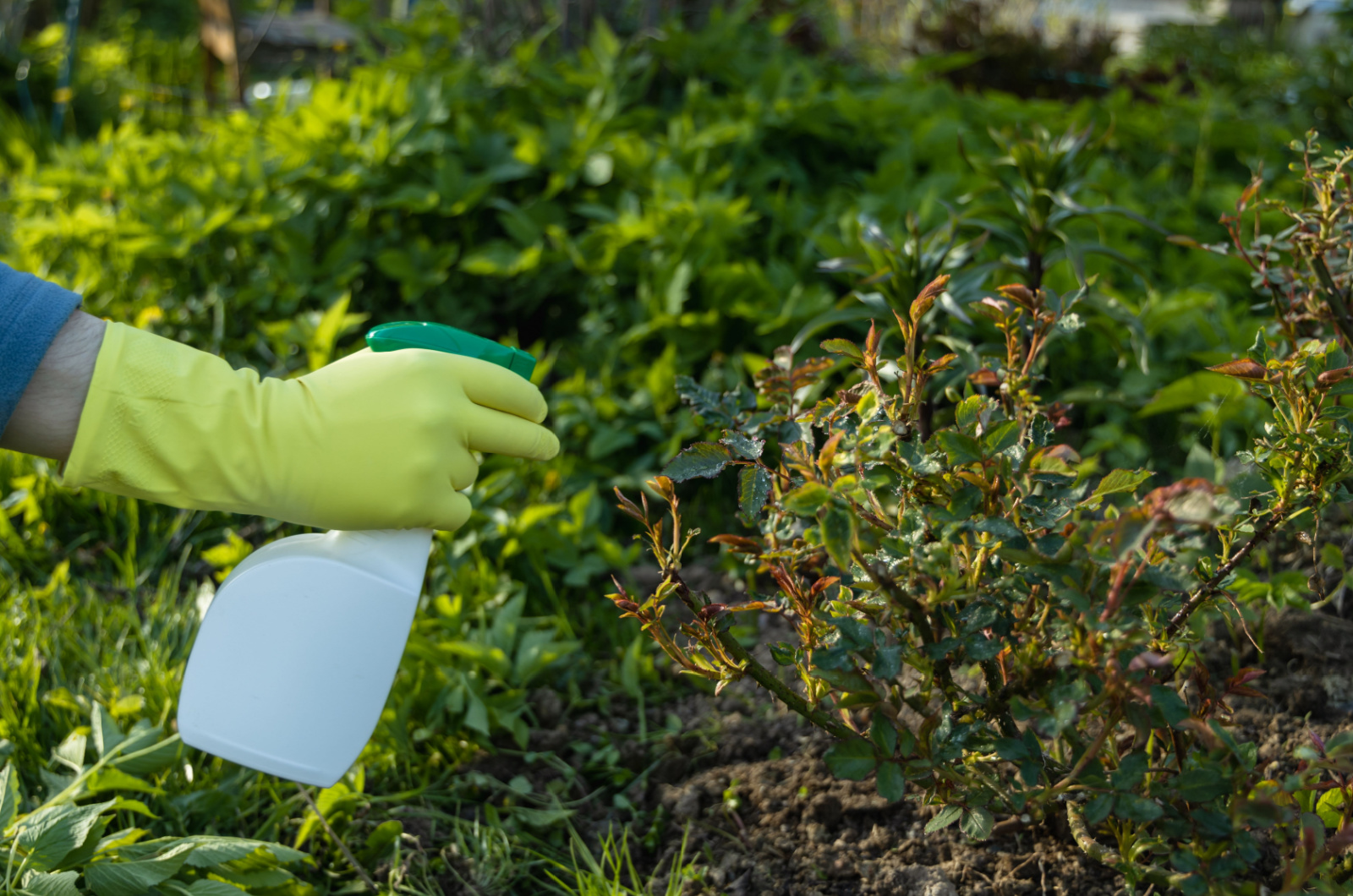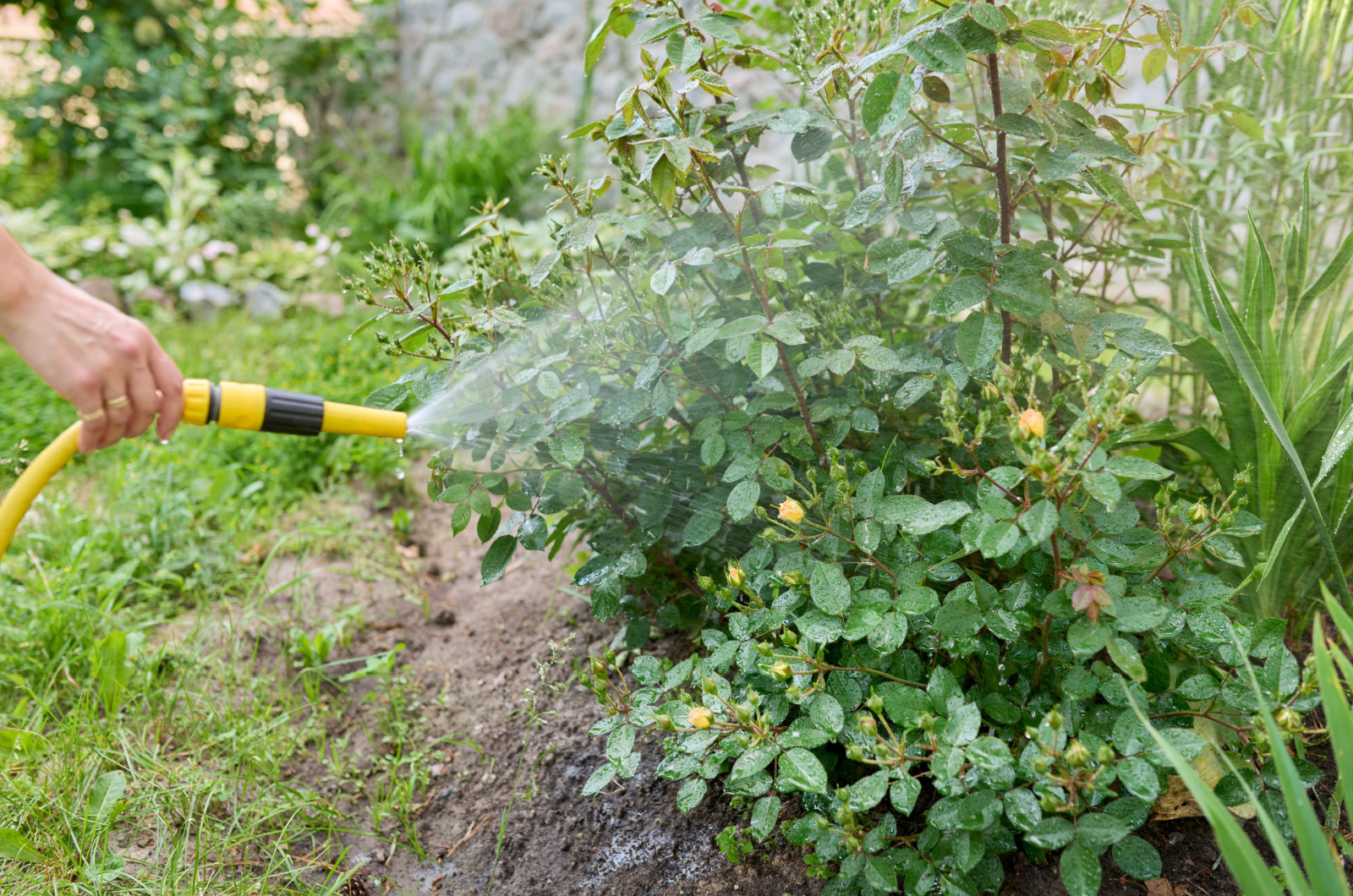You may have heard numerous times that roses are pretty hard plants to maintain. Unfortunately, many gardeners face different issues when growing these beauties.
One of the issues you may notice on the leaves of your prized roses is white spots. Make sure to check the undersides of the leaves, because the spots may also affect those areas.
It happens more often than you’d think, and it’s essential to determine the cause before starting to treat the plants.
In this article, I’ll show you how to get rid of white spots on rose leaves and tell you why it happens in the first place.
Let’s get started!
1. Apply Neem Oil Fungicide
Neem oil is frequently used to treat various issues in many plant species. One of the problems that can occur in your roses is white spots caused by powdery mildew disease.
Foliage, stalks, flower buds, and petals can all be covered in spots if the disease progresses.
One of the common solutions for this rose plant problem is neem oil fungicide. When applying this potent ingredient, make sure to spray all the leaves and other infected parts. It’s also advisable to spray healthy rose leaves to prevent infections from spreading.
You should always apply this solution in the morning on a dry day. Using it during hot summer afternoons will do more harm than good.
Reapplying neem oil to your roses will most likely be necessary, but wait about 7-10 days after the first application.
If powdery mildew hasn’t progressed yet and it’s affected only a leaf or two, you can cut off the infected parts using a sanitized pair of scissors.
2. Wash Bugs Off The Leaves
Another reason why your roses might display white spots can be pest infestation. Aphids leave white webbings over the plant that look like spots.
If white spots are on the undersides of the rose leaves, scale insects may be to blame. Their eggs are typically covered with waxy fibers.
Even leafhoppers can pay a visit and leave white spots on the rose leaf undersides.
The good news is that you can employ one simple pest control technique no matter which bug you’re dealing with. Simply take a garden hose and spray your rose leaves and blossoms with water.
Don’t worry, this method won’t damage rose blooms and it will remove many bugs. If the infestation isn’t severe, you should pick off as many pests as you can.
Another way to control pests in roses is to dip a cotton swab in alcohol and rub it on the infected plant sections. For severely affected roses, pruning all the infested parts is recommended.
Remember that not inspecting for pests or diseases is a common rose growing mistake, so make sure to include this method.
3. Make A Spray From Baking Soda, Neem Oil, And Dish Soap
Treating white spots on roses with fungicides and insecticides is easier and gives results faster. However, that should be your last option because it’s not environmentally friendly.
Plus the ingredients in these products can deter beneficial insects and pollinators and that’s the last thing you want.
A common solution for various issues in roses, including white spots, is a mixture of baking soda, neem oil, and dish soap.
Take about 3 tbsp of baking soda and add it to a gallon of water, then add a few drops of neem oil (or other horticultural oil). Mix well and finish by adding a few drops of dish soap.
Baking soda is extremely effective against different fungal species whereas horticultural oils prevent fungal growth and pest infestation.
Dish soap will provide your solution with a better texture and it won’t stick to the surface of rose leaves.
As mentioned above, fungi and pests can hide on the undersides of rose leaves, so don’t forget to spray there.
The Bottom Line
Roses are indeed one of the prettiest flowering plants out there, but they need extra TLC to grow healthy and generate an abundance of blossoms.
Don’t forget to inspect them regularly, and if you notice some white spots, use our guidelines to treat them!
References
1. Powdery Mildews. (2016, February 22). Colorado State University Extension.




